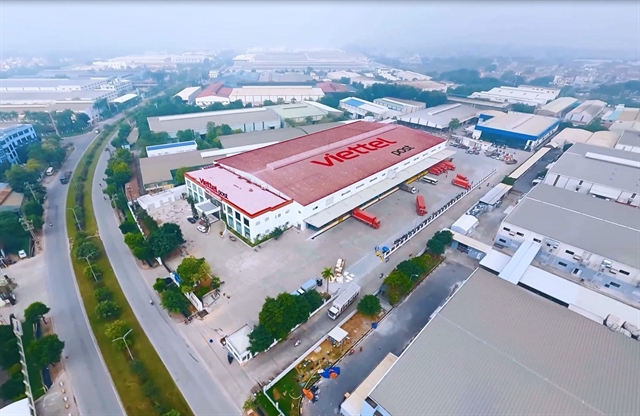Việt Nam needs investment in research and development (R&D) and high-quality human resources for the journey of technological development and increasing competitiveness.

HÀ NỘI — Việt Nam needs investment in research and development (R&D) and a high-quality workforce on the journey of technological development and increasing competitiveness.
Việt Nam ranks 44th among the 133 economies featured in the Global Innovation Index 2024, published by the World Intellectual Property Organisation (WIPO), an encouraging two-place rise from the previous year.
Particularly noteworthy is the country’s leap in the high-tech industry output index, with the country now ranked 28th globally.
However, Việt Nam's R&D expenditure remains modest, at just 0.4 per cent of GDP in 2023 - far below the global average of 2.3 per cent and trailing behind regional peers such as China (2.5 per cent), Singapore (1.9 per cent), and Malaysia (1 per cent).
This under investment reflects a shortage of high-quality technical professionals and limited access to capital for innovation-led enterprises.
The Deputy Director of the Institute of Information Technology under the Việt Nam Academy of Science and Technology, Nguyễn Long Giang, emphasised that developing a strong digital economy requires a skilled workforce, especially in areas like AI, cloud computing, blockchain and cybersecurity. Yet Việt Nam continues to struggle with both attracting and retaining such talent.
The domestic technology sector faces fierce competition - not just from within the country, but also from global markets. Cases of brain drain and frequent job-hopping are common.
Even large corporations like Viettel are feeling the pressure. To remain competitive, Viettel has increased salaries by about 20 per cent above the industry average, with top-tier roles commanding salaries in the top five per cent of the market, yet even this may not be enough to sustain long-term growth.
While businesses are eager to innovate, capital remains a significant hurdle. R&D activities - by nature uncertain and intangible - are often considered high-risk by traditional lenders.

The Deputy Director of the Department of Startups and Technology Enterprises at the Ministry of Science and Technology, Phạm Đức Nghiệm, notes that the inability to value intangible assets such as patents and proprietary technologies continues to impede financing efforts.
One such case is Thuận Thành Technology Solutions Co, Ltd in Bắc Ninh. Despite nearly a decade in operation, the company faces persistent challenges in securing funding for infrastructure expansion due to stringent collateral requirements - typically favouring tangible assets like property and vehicles, which tech start-ups often lack.
The Institute for Digital Economic Development Strategy (IDS) also noted that although Việt Nam has several technology companies with the potential to compete globally, these enterprises still face challenges in scaling up due to difficulties in capital mobilisation.
In response to these challenges, Việt Nam is preparing to roll out a VNĐ500 trillion (US$ 192 million) credit package to support digital infrastructure and technology enterprises.
However, experts warn that unless lending conditions are tailored to the realities of innovative businesses, disbursement may remain slow and ineffective.
In HCM City, Việt Nam’s leading R&D hub, the burden of funding still falls largely on the private sector. Despite being home to global R&D centres such as Intel, Samsung, and Bosch, along with top-tier universities and institutes, the city’s public R&D budget stands at a modest VNĐ200 billion per year.
Việt Nam’s digital economy is gaining ground, with revenues projected to hit US$152 billion in 2024 - a 35 per cent increase since 2019. More than 74,000 enterprises now operate in this space. Yet to maintain this momentum, urgent action is needed to tackle the core bottlenecks, including limited R&D investment and a shortage of skilled professionals.
To address these challenges, the Politburo’s Resolution No 57-NQ/TW sets a bold vision that by 2030, R&D investment should reach two per cent of GDP, with more than 60 per cent coming from the private sector.
Additionally, at least 15 per cent of the science budget is earmarked for strategic technologies such as AI, semiconductors and renewable energy.
Achieving this goal requires systemic reform, including amendment of the 2013 Law on Science and Technology, more flexible budgeting mechanisms and streamlined fund allocation processes.
Although several companies have embraced the Science and Technology Development Fund mechanism, overall use remains low. Between 2016 and 2018, Viettel used only 60 per cent of its allocated funds, about VNĐ2.37 trillion.
Many businesses hesitate to engage with the fund due to unclear guidelines and cumbersome establishment procedures - currently taking up to a year to complete.
Experts argue that simplifying these mechanisms could significantly increase corporate investment in science and technology. Resolution 193 from the National Assembly has taken a step in this direction, but implementation is still awaiting detailed government regulations. — VNS





